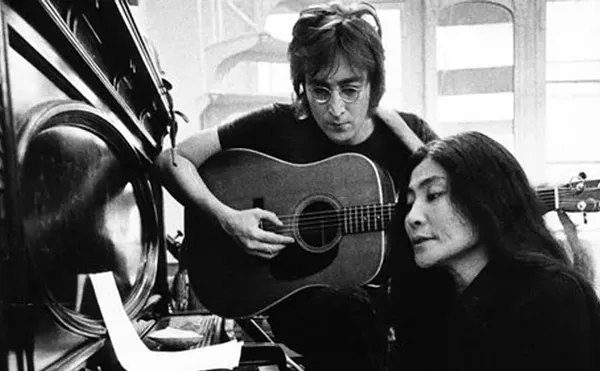
Audio By Carbonatix
[
{
"name": "GPT - Leaderboard - Inline - Content",
"component": "35519556",
"insertPoint": "5th",
"startingPoint": "3",
"requiredCountToDisplay": "3",
"maxInsertions": 100,
"adList": [
{
"adPreset": "LeaderboardInline"
}
]
}
]
Beginning in the self-indulgent 1970s, long before Live Aid and “We Are The World,” musician Harry Chapin was a one-man army, working tirelessly for social causes including hunger and the arts. Chapin performed more than 2,000 concerts throughout his career, and better than half were benefits. But there were no TV specials or newspaper articles to reflect on and honor Chapin’s social activism, nothing such as the recognition John Lennon and John Denver received. Most people probably don’t know or remember much about him. But Peter Morton Coan’s recently re-released biography, coinciding with the 20th anniversary of Chapin’s death, may change that.
Coan, who accompanied Chapin on the road for the last seven years he was alive and became a close friend, has penned a fascinating story about the whirlwind of Chapin’s life, without the titillation of drug binges and groupies that we’ve come to expect in musical bios.
The first focus is on Chapin’s early life, then the book shifts to his years of fame (starting with the release of “Taxi”), and later discusses the activism that took over his life and left his career suffering. The early chapters are a thorough retelling of his childhood, including his tyrannical stepfather, his expulsion from Cornell University (despite a high IQ) and his bouncing from job to job till he turned 28. The book
doesn’t really pick up momentum until the second half, after Chapin decided to seriously pursue music. From his early inability to connect with an audience to the bidding war that broke out to sign him, through “Cats in the Cradle” his 1974 hit, Coan shows the struggles and sacrifices Chapin made to get to the top and the pitfalls that almost destroyed his marriage.
However, the heart of the book lies in Chapin’s commitment to social issues, showcasing World Hunger Year, the organization he founded to fight hunger, as well as his involvement in saving art programs in his own community.
As detailed as Coan is throughout the book, he fails to discuss the feud that surfaced between himself and Chapin’s widow, Sandy, shortly after Chapin’s death. This caused a court fight, which blocked publication of the book till 1990, when Coan finally won the rights to his book. Regardless, this is still a thoroughly researched and illuminating story. An old friend once said of Chapin, “He had a thing that he was going to change people’s lives. I think that was what he was trying to do with his music.” For those who connected with Chapin’s songs (filled with lonely and heartbroken characters much like themselves), and for the people he helped feed with his benefits, Chapin did change lives. That’s worth more than any hit song he could have written. He should be remembered accordingly.
Carrie DiPirro is a Metro Times editorial intern. Send comments to letters@metrotimes.com.





